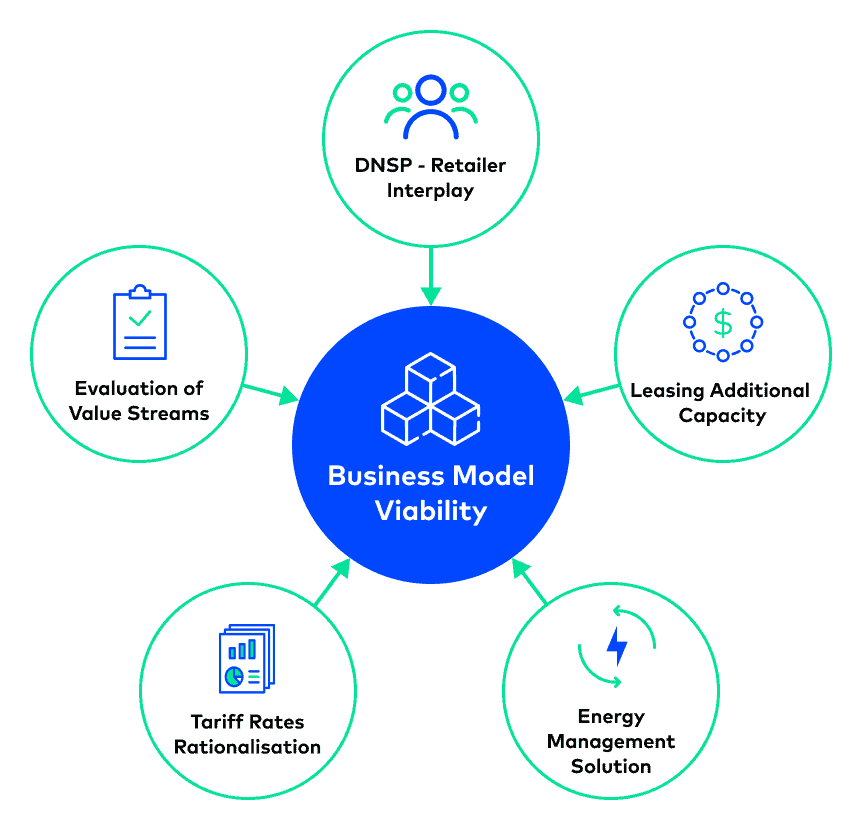Australia is a hotbed for clean energy innovation, and boosting renewable energy adoption is the cornerstone of the country’s effort to respond to climate change. The transition to a net-zero energy economy is not achievable without building energy storage capacity—the Swiss army knife of any decarbonization strategy. Storage devices can collect clean energy and then dispatch it when needed after the sun sets or the wind stops blowing.
Australia is currently pioneering new value streams from community batteries in one of the world’s most dynamic, deregulated electricity markets—and other markets could adopt similar approaches in the future. In any complex energy market, in order to get the most value out of community batteries, hardware components need to be paired with an energy storage management system (ESMS) that uses predictive AI to maximize returns across multiple value streams and stakeholder groups. Without AI-powered optimization tools, the full value of these assets cannot be fully realized by consumers, energy retailers, and distribution network service providers (DNSPs).
How AI Enables Multiple Energy Stakeholders to Leverage Batteries
Community batteries are designed to deliver value for multiple sets of stakeholders. In Australia, these stakeholders include the DNSP, who leverages capacity from these assets for grid balancing; an energy retailer or aggregator, who actively manages and operates the battery; and the community where the battery is deployed. In other countries like the United States, stakeholders may include an integrated utility and its customers who live in a neighborhood with a community battery.
For community batteries to be commercially viable, an intelligent ESMS platform must be interoperable between a DNSP’s enterprise system, grid edge control layer, and energy market interfaces. The ESMS must be able to co-optimize across value streams to deliver benefits across the entire energy stakeholder ecosystem.
The complexity of community energy storage optimization in Australia is captured in the diagram below. An ESMS powered by predictive AI technology is a must-have solution to meet the challenge of delivering on each of these value streams and enabling a viable business model. Pairing battery hardware with intelligent energy storage and flexibility management software ensures these investments in community resilience and performance optimization can gain traction once government support runs out and these projects need to stand on their own.

4 Energy Storage Technology Principles for Community Battery Optimization
Not all energy storage systems can support the challenges posed by community battery optimization in multi-stakeholder, multi-market energy landscapes. Here are four principles to guide the selection process for any optimization software to ensure project success:
- Flexible architecture. A cloud-based system developed around open standards is ideal to prevent vendor lock-in and reduce technology risk for communities. Application programming interface (API)-based integrations may also be needed for trading partners to enable market participation, in addition to DNSP enterprise IT and OT system integrations.
- Single-asset/multi-value optimization. ESMS optimization logic should support co-optimization across site-level and wholesale market value streams. These optimization algorithms should take into consideration all static parameters, operational constraints, network constraints, battery faults, solar generation forecasts, market price signals, market compliance rules, and network tariff rates to deliver comprehensive battery charge/discharge plans.
- Seamless transfer of control. An important aspect of the multistakeholder value realization from community batteries is seamless integration and transfer of control between DNSPs and market participants. An ESMS should support software integrations along with onsite controllers to enable the smooth transfer of control between stakeholders.
- Scalability. As the number of community battery assets grows, so does the need for a scalable, configurable platform with proven optimization and dispatch capabilities. A cloud-based solution can work seamlessly with a variety of original equipment manufacturers (OEMs), facilitating market-related value streams as an aggregated VPP of community batteries and other DERs at the portfolio level.
Maximizing Community Battery Value with Intelligent Technology
Community batteries can offer a wide array of benefits across energy system stakeholders—and AI-powered technology can help asset managers unlock these benefits to the fullest. By pairing sophisticated battery hardware with predictive energy storage and flexibility management software, asset operators can optimize value in real time as they respond to changing community and market energy needs.




